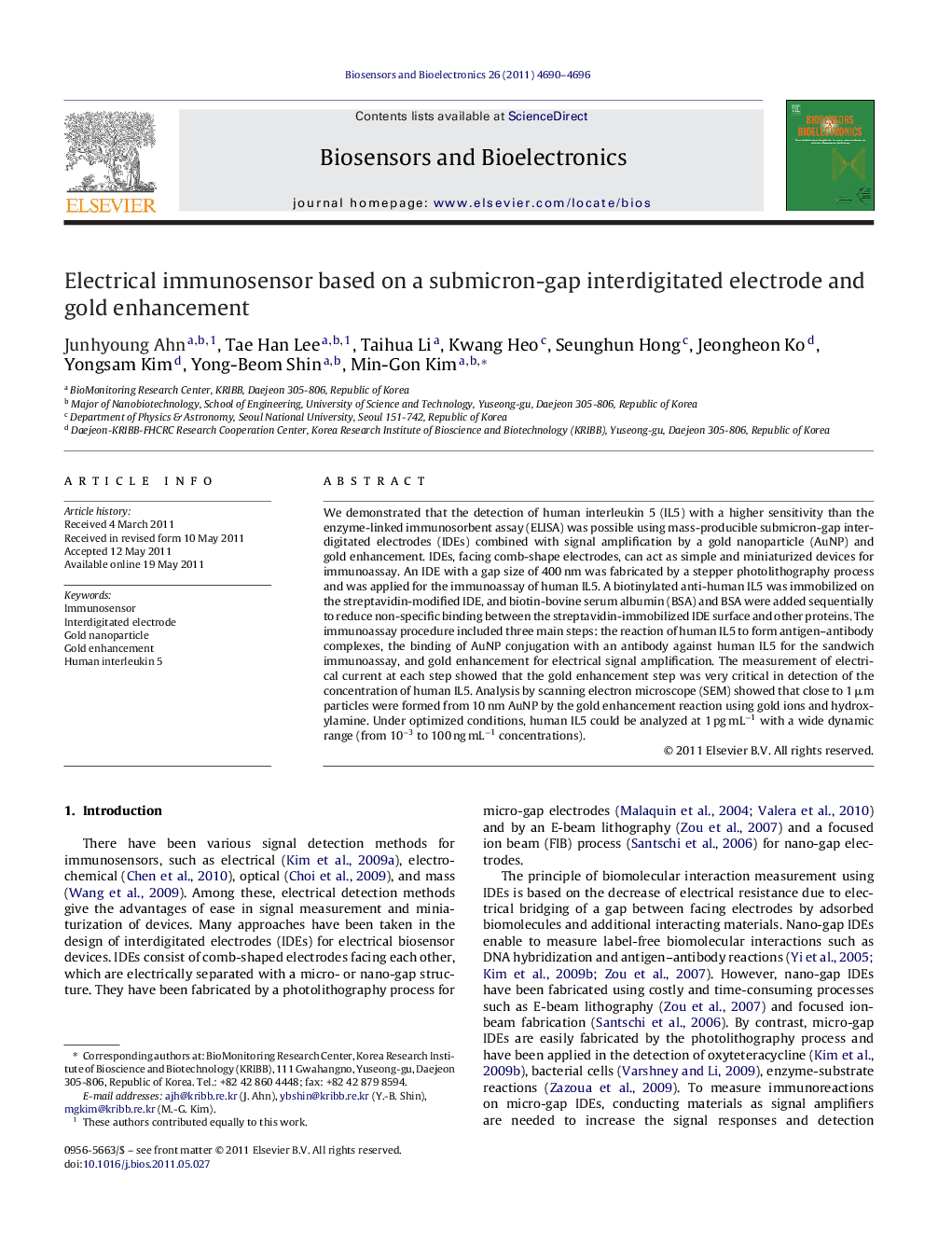| Article ID | Journal | Published Year | Pages | File Type |
|---|---|---|---|---|
| 867982 | Biosensors and Bioelectronics | 2011 | 7 Pages |
We demonstrated that the detection of human interleukin 5 (IL5) with a higher sensitivity than the enzyme-linked immunosorbent assay (ELISA) was possible using mass-producible submicron-gap interdigitated electrodes (IDEs) combined with signal amplification by a gold nanoparticle (AuNP) and gold enhancement. IDEs, facing comb-shape electrodes, can act as simple and miniaturized devices for immunoassay. An IDE with a gap size of 400 nm was fabricated by a stepper photolithography process and was applied for the immunoassay of human IL5. A biotinylated anti-human IL5 was immobilized on the streptavidin-modified IDE, and biotin-bovine serum albumin (BSA) and BSA were added sequentially to reduce non-specific binding between the streptavidin-immobilized IDE surface and other proteins. The immunoassay procedure included three main steps: the reaction of human IL5 to form antigen–antibody complexes, the binding of AuNP conjugation with an antibody against human IL5 for the sandwich immunoassay, and gold enhancement for electrical signal amplification. The measurement of electrical current at each step showed that the gold enhancement step was very critical in detection of the concentration of human IL5. Analysis by scanning electron microscope (SEM) showed that close to 1 μm particles were formed from 10 nm AuNP by the gold enhancement reaction using gold ions and hydroxylamine. Under optimized conditions, human IL5 could be analyzed at 1 pg mL−1 with a wide dynamic range (from 10−3 to 100 ng mL−1 concentrations).
